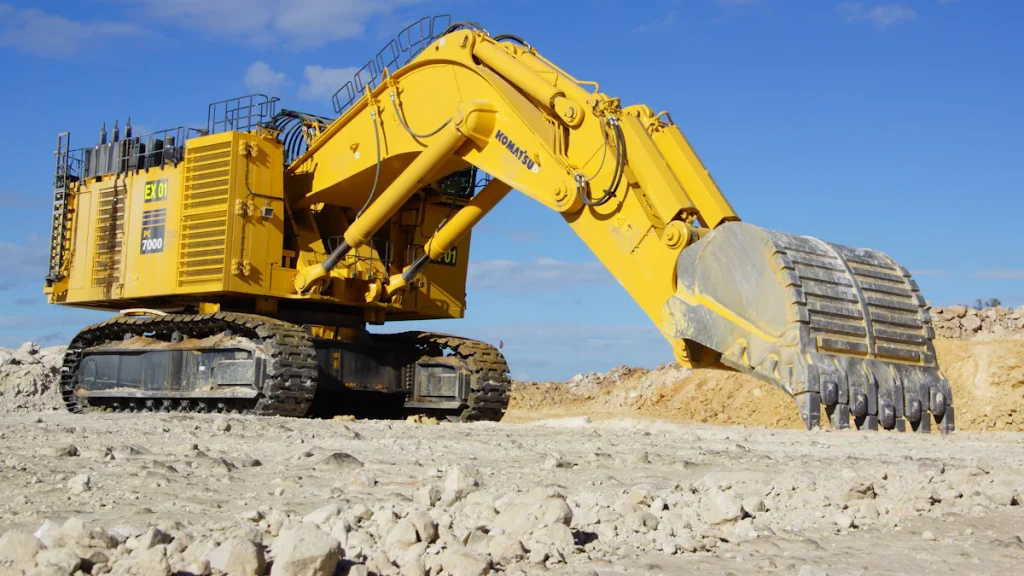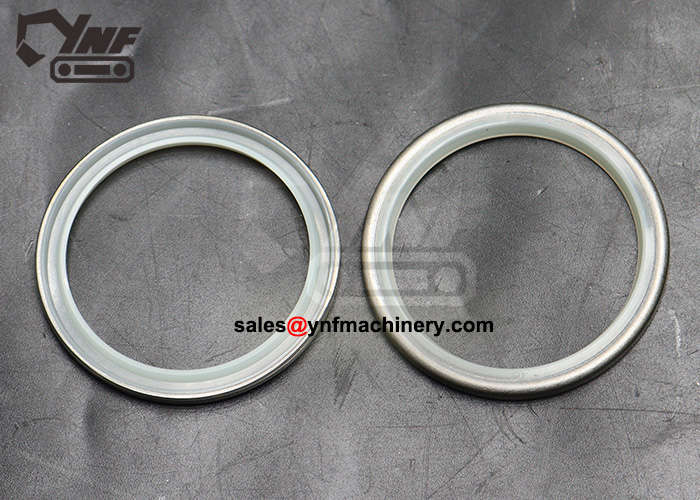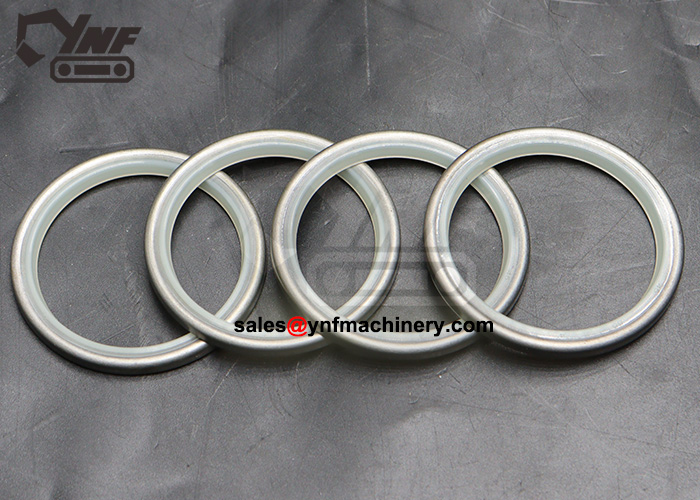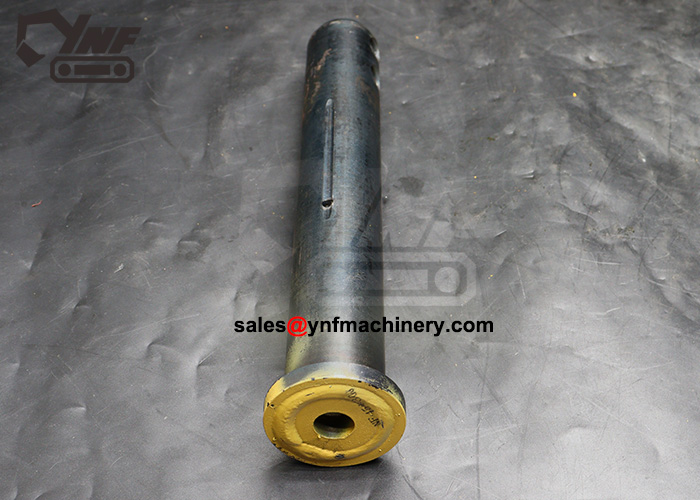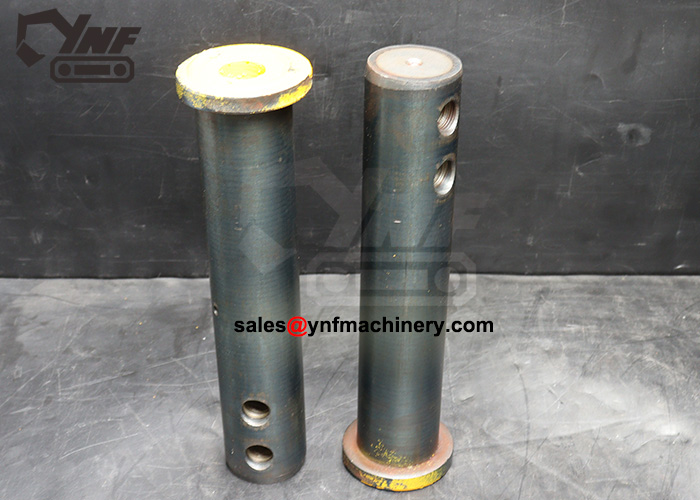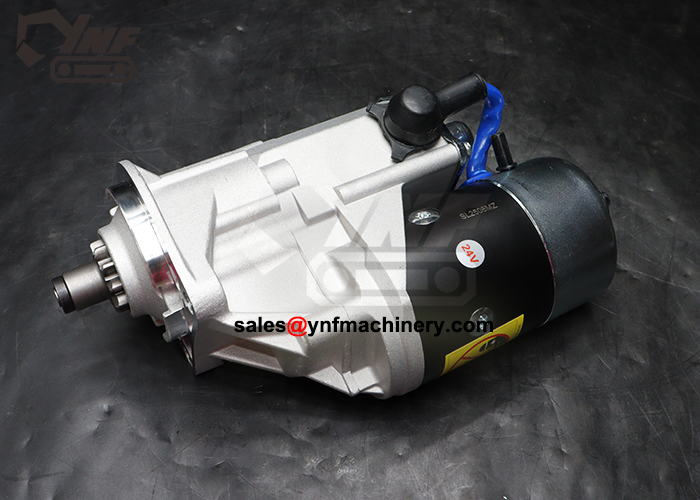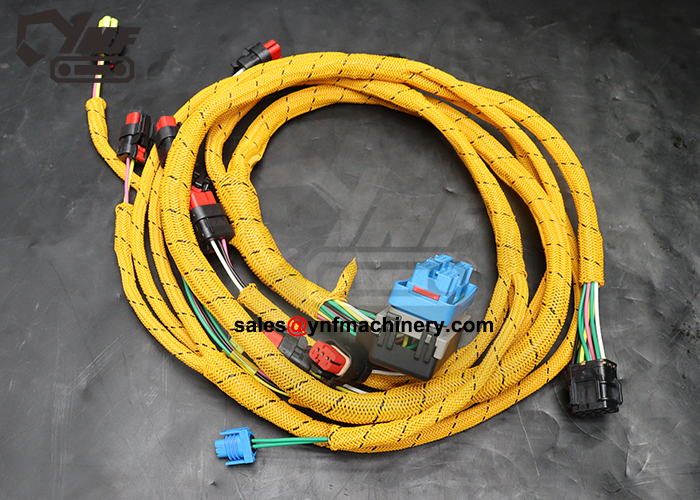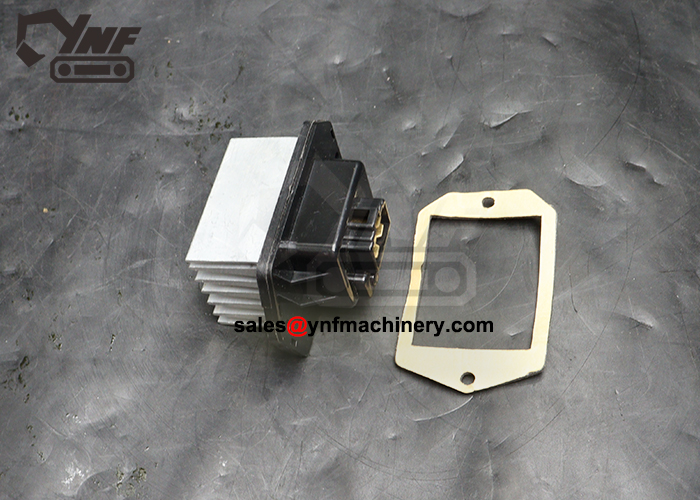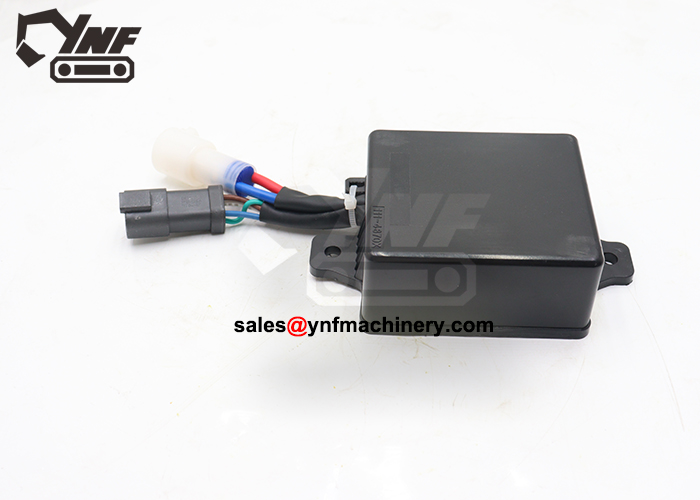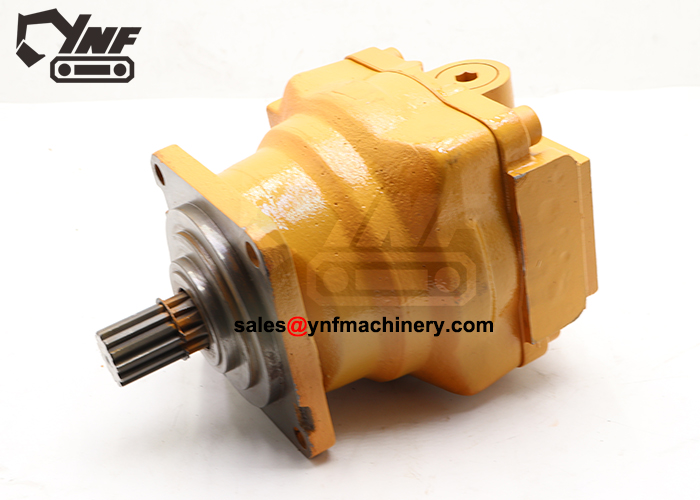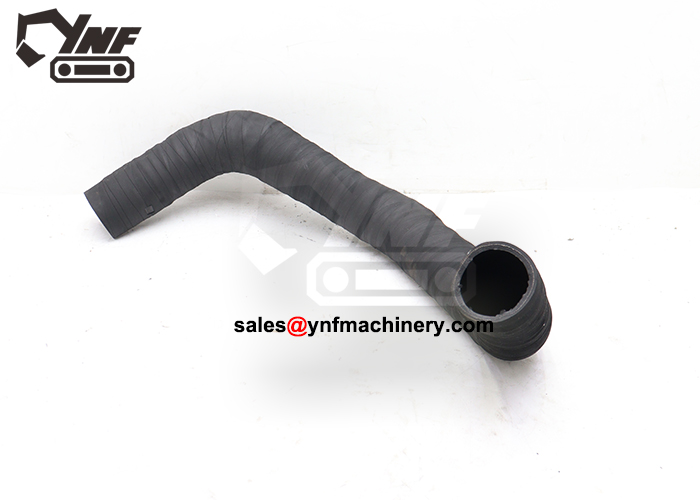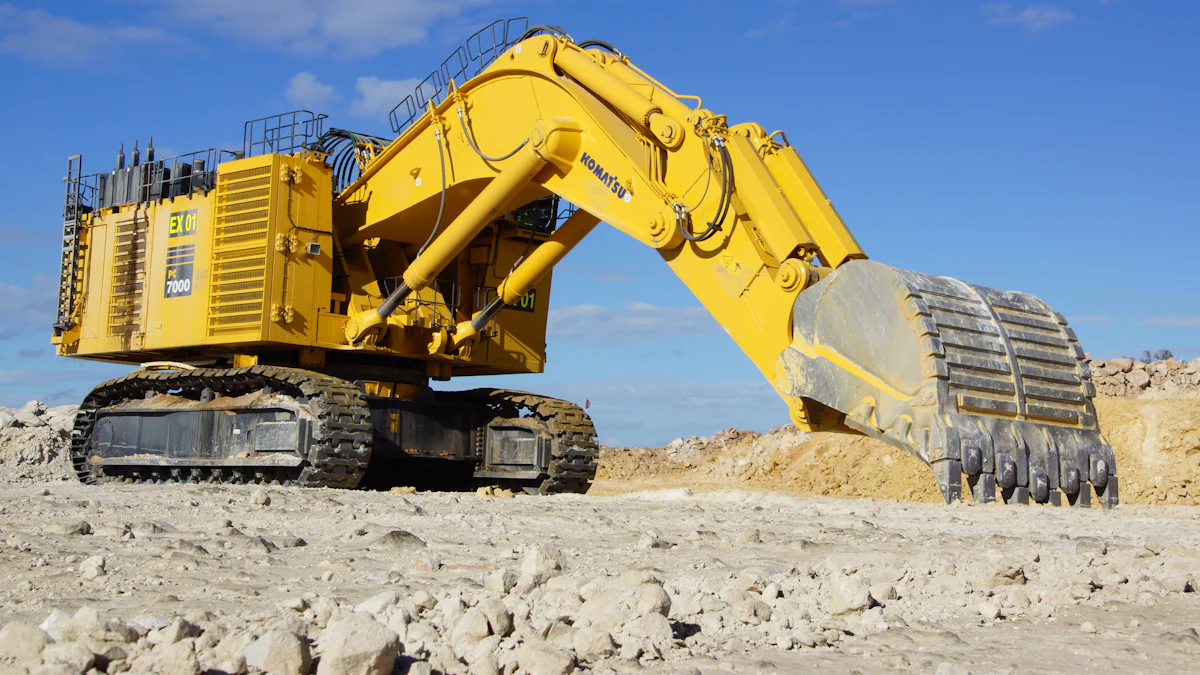
Maintaining your excavator’s performance requires timely replacement of worn or damaged components. Over time, parts of excavator Caterpillar, such as hydraulic seals, bucket teeth, or engine components, experience wear and tear. Regular inspections help you identify these issues early, preventing costly breakdowns. Using genuine parts ensures reliability and extends the lifespan of your equipment. A clean workspace and proper tools make the replacement process safer and more efficient. By taking these steps, you can minimize downtime and keep your machine running smoothly.
Key Takeaways
Create a safe and clean workspace to minimize risks and enhance efficiency during excavator maintenance.
Always consult the excavator’s manual to identify the correct parts and follow the manufacturer’s instructions for safe removal and installation.
Use genuine parts from trusted suppliers like YNF Machinery to ensure compatibility, durability, and optimal performance.
Handle all components with care to prevent damage and ensure a successful replacement process.
Conduct thorough functionality tests and inspections after replacement to confirm proper operation and identify any potential issues early.
Regular maintenance and inspections are crucial for prolonging the lifespan of your excavator and avoiding costly repairs.
Step 1: Prepare Your Workspace and Gather Tools for Excavator Maintenance
Ensure a Safe and Clean Workspace
Creating a safe and clean workspace is the first step in effective excavator maintenance. Begin by selecting a well-lit area with enough space to move around freely. Remove any clutter, debris, or unnecessary tools that could pose a tripping hazard. A clean environment minimizes the risk of accidents and prevents dirt or contaminants from entering sensitive components during the replacement process.
Pay special attention to areas like the slewing ring and swing motor. These parts often accumulate dirt and debris due to their positioning on the excavator. Regularly inspect and clean these areas to avoid strain on the components and ensure smooth operation. Neglecting this simple task can lead to long-term damage and costly repairs.
If you’re working outdoors, consider using a tarp or mat under the excavator tracks to catch any falling parts or tools. This practice not only keeps your workspace tidy but also makes it easier to locate small components during the repair process. Prioritizing cleanliness and safety ensures a smoother workflow and protects both you and your equipment.
Gather the Necessary Tools and Equipment
Having the right tools on hand is essential for efficient excavator undercarriage maintenance and other repair tasks. Start by consulting the excavator’s manual to identify the specific tools required for the job. Common tools include wrenches, screwdrivers, pliers, and torque wrenches. For hydraulic components, you may need specialized tools like seal pullers or hydraulic line wrenches.
Ensure all tools are in good condition before use. Damaged or worn-out tools can compromise the quality of your work and increase the risk of injury. Organize your tools in a toolbox or on a workbench for easy access. This setup saves time and reduces frustration during the replacement process.
In addition to tools, gather any replacement parts you’ll need. Always choose genuine parts from trusted suppliers like YNF Machinery. Using high-quality components ensures durability and optimal performance, reducing the likelihood of future issues. Keep a stock of commonly replaced parts, such as hydraulic seals or engine components, to minimize downtime during repairs.
By preparing your workspace and gathering the necessary tools, you set the stage for a successful maintenance session. These steps not only enhance efficiency but also contribute to the longevity of your excavator.
Step 2: Identify the Right Parts of Excavator Caterpillar
Consult the Excavator’s Manual
The excavator’s manual is your most reliable guide when identifying the correct parts for replacement. It provides detailed information about the specifications and compatibility of various components. Start by locating the section that lists the common parts replaced during maintenance, such as hydraulic seals, engine components, or couplings. Cross-reference the part numbers in the manual with the physical components on your machine to ensure accuracy.
Pay close attention to diagrams and descriptions in the manual. These visuals help you understand the exact placement and function of each part. If you’re unsure about a specific component, the manual often includes troubleshooting tips to help you identify potential issues. Using this resource minimizes errors and ensures you select the right parts of excavator Caterpillar for your repair needs.
For added convenience, keep a digital or printed copy of the manual in your workspace. This allows you to quickly verify details without interrupting your workflow. By consulting the manual, you take the guesswork out of the process and set yourself up for a successful replacement.
Purchase Genuine Parts from Trusted Suppliers
Choosing genuine parts is essential for maintaining the performance and longevity of your excavator. Genuine Caterpillar parts are designed to meet precise specifications, ensuring compatibility and reliability. These parts undergo rigorous testing to deliver durability and consistent performance, even in demanding environments. Unlike aftermarket alternatives, genuine parts reduce the risk of malfunctions and voided warranties.
When sourcing parts, prioritize trusted suppliers like YNF Machinery. YNF Machinery offers a wide range of high-quality components, including hydraulic seals, engine parts, and couplings. Their products meet or exceed industry standards, providing exceptional value for your investment. With over 35 years of experience, YNF Machinery ensures you receive durable and efficient parts tailored to your needs.
Purchasing from a reputable supplier also simplifies the process. Many suppliers, including YNF Machinery, provide easy online ordering and fast delivery. This minimizes downtime and keeps your equipment running at peak efficiency. Additionally, genuine parts often come with warranties, giving you peace of mind and added protection for your investment.
By consulting the manual and choosing genuine parts from trusted suppliers, you ensure the success of your maintenance efforts. These steps not only enhance the performance of your excavator but also extend its lifespan, saving you time and money in the long run.
Step 3: Remove the Old or Damaged Part Safely
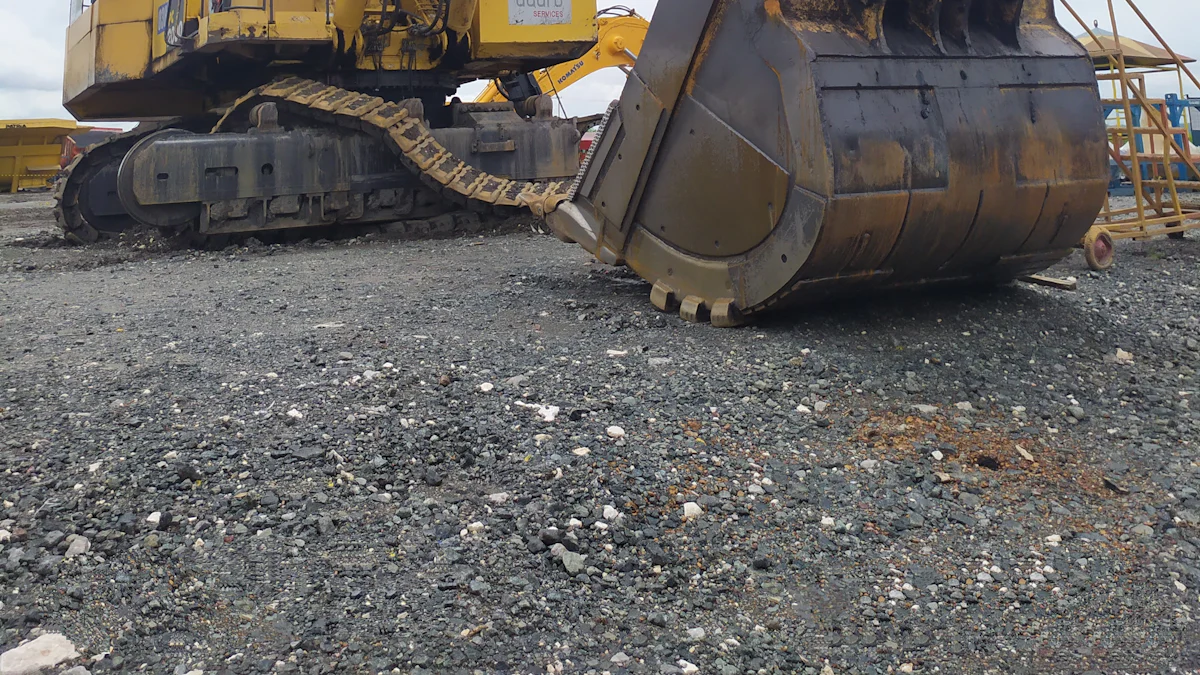
Follow Manufacturer’s Instructions for Cat Part Replacement
Adhering to the manufacturer’s instructions is essential when performing a cat part replacement. Begin by consulting the excavator’s manual to understand the specific steps for removing the damaged component. The manual provides detailed guidance, including diagrams and torque specifications, ensuring you follow the correct procedure. Skipping this step can lead to improper removal, which may damage surrounding parts or compromise the machine’s functionality.
Before starting, ensure the excavator is powered off and the hydraulic pressure is fully released. This precaution prevents accidental movement and reduces the risk of injury. Use the recommended tools specified in the manual to avoid damaging bolts, screws, or other fasteners during the process. For example, hydraulic components often require specialized tools like seal pullers or hydraulic line wrenches to ensure safe and efficient removal.
Expert Tip from Fab Heavy Parts: “Regularly inspecting the condition of the bucket or attachment on your excavator is crucial for maintaining efficiency and prolonging its lifespan. Over time, wear and tear can affect the effectiveness of these essential tools.”
Follow a systematic approach to disassemble the part. Start by loosening fasteners in the sequence outlined in the manual. Keep track of removed components by organizing them in a labeled container or tray. This practice ensures you can easily reassemble the parts later without confusion. By strictly following the manufacturer’s instructions, you safeguard the integrity of your equipment and streamline the replacement process.
Handle Components with Care to Avoid Damage
Handling components with care is vital during heavy equipment repairs. Excavator parts are often heavy and intricate, requiring precise handling to prevent damage. Use appropriate lifting tools, such as hoists or slings, to safely remove larger components like hydraulic cylinders or engine parts. Avoid using excessive force, as this can deform or crack sensitive parts.
Inspect the removed part for signs of wear, corrosion, or damage. This step helps you identify the root cause of the issue and ensures the replacement part addresses the problem effectively. Clean the surrounding area thoroughly before installing the new part. Dirt or debris can interfere with the performance of the replacement component, leading to premature wear.
Store the removed part in a safe location, especially if it contains reusable components. For instance, bolts or washers may still be in good condition and can be reused if they meet the manufacturer’s specifications. Always handle hydraulic lines and seals with extra caution. Even minor scratches or contamination can compromise their functionality.
By treating each component with care, you not only protect your investment but also ensure the success of the cat part replacement. This attention to detail minimizes downtime and keeps your excavator in optimal working condition.
Step 4: Install the New Part Using Best Excavator Practices
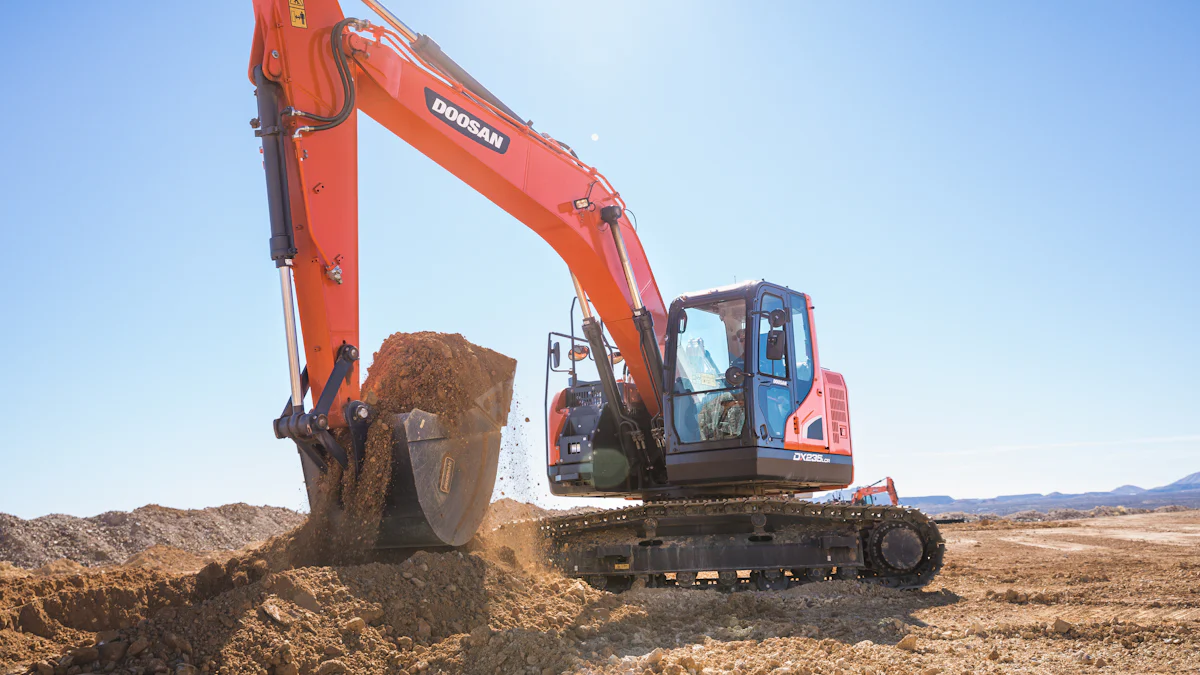
Position and Align the New Part Correctly
Proper positioning and alignment of the new part are critical to ensuring your excavator operates efficiently. Begin by carefully inspecting the replacement part to confirm it matches the specifications outlined in the excavator’s manual. This step ensures compatibility and prevents potential issues during installation.
When positioning the new part, use the diagrams and instructions provided in the manual as a guide. Align the part with the corresponding components on the excavator, ensuring all connection points are properly matched. For example, when installing hydraulic components, make sure the seals and fittings are clean and free from debris to prevent leaks. Use precision tools, such as alignment pins or clamps, to hold the part in place while you secure it.
Take your time during this step to avoid misalignment, which can lead to premature wear or damage. If the part feels difficult to position, double-check for obstructions or incorrect orientation. A properly aligned part not only enhances performance but also extends the lifespan of your equipment.
Pro Tip: Always clean the surrounding area before installation. Dirt or debris can interfere with the alignment process and compromise the functionality of the new part.
Secure the Part and Reconnect Systems
Once the new part is correctly positioned, secure it using the recommended fasteners and torque settings specified in the manual. Tighten bolts and screws in a systematic sequence to ensure even pressure distribution. This approach prevents stress on the part and reduces the risk of damage. For hydraulic components, use a torque wrench to achieve precise tightening, as over-tightening can deform seals or fittings.
Reconnect any systems that were disconnected during the removal process. For instance, if you replaced a hydraulic cylinder, reattach the hydraulic lines and ensure all connections are tight and secure. Check for any signs of leaks by gently pressurizing the system before fully operating the excavator. This precaution helps you identify and address issues early.
After securing the part, perform a visual inspection to confirm everything is in place. Look for loose fasteners, misaligned components, or any signs of wear on adjacent parts. Taking these extra steps ensures the new part functions optimally and integrates seamlessly with the rest of the machine.
Why Choose YNF Machinery? YNF Machinery offers high-quality replacement parts that meet or exceed industry standards. Their products, including hydraulic components and engine parts, are designed for durability and reliability. By choosing YNF Machinery, you ensure your excavator operates at peak performance with minimal downtime.
By following these best excavator practices, you can confidently install the new part and restore your machine’s functionality. Proper installation not only improves performance but also reduces the likelihood of future repairs, saving you time and money.
Step 5: Test and Inspect the Excavator After Replacement
Conduct a Functionality Test
After completing the replacement, you must test the excavator to ensure everything operates as expected. Start by powering on the machine and allowing it to idle for a few minutes. This step helps stabilize the system and ensures all components are properly seated. Pay close attention to the engine’s sound and the hydraulic system’s responsiveness during this phase.
Next, operate the excavator through its basic functions. Test the boom, arm, and bucket movements to confirm smooth operation. Check the controls inside the cab for proper responsiveness. If you replaced hydraulic components, monitor the hydraulic pressure gauge to ensure it stays within the recommended range. Any unusual noises, vibrations, or delays in response could indicate an issue that needs immediate attention.
Pro Tip: Always test the cooling system during functionality checks. Overheating can damage critical components and lead to costly repairs. Ensure the cooling system maintains the correct temperature throughout the operation.
Perform these tests in a controlled environment before using the excavator on a job site. This precaution minimizes risks and ensures the machine is ready for heavy-duty tasks. By conducting a thorough functionality test, you can identify and resolve potential issues early, saving time and resources.
Inspect for Issues and Ensure Proper Operation
Once the functionality test is complete, perform a detailed inspection of the excavator. Begin with a walkaround to visually examine the replaced part and its surrounding components. Look for signs of leaks, loose fasteners, or misaligned parts. Pay special attention to hydraulic lines and seals, as even minor issues can escalate into significant problems.
Inspect the attachments, such as the bucket or couplings, for wear or damage. Ensure they are securely fastened and aligned correctly. Inside the cab, check the gauges, controls, and warning lights for proper operation. Verify that all safety features, including emergency shutoff systems, are functioning as intended.
Expert Insight: According to experienced operators, daily inspections are essential for maintaining efficiency and prolonging the lifespan of your equipment. Regular checks help you catch potential issues before they lead to major breakdowns.
Document your findings during the inspection. If you notice any irregularities, address them immediately. For unresolved issues, consult the excavator’s manual or contact a trusted supplier like YNF Machinery for expert advice and high-quality replacement parts. Their extensive range of durable components ensures your machine remains in peak condition.
By thoroughly testing and inspecting the excavator, you ensure it operates safely and efficiently. These steps not only enhance performance but also extend the machine’s lifespan, making your investment worthwhile.
Replacing parts of excavator Caterpillar becomes a straightforward process when you follow these five steps. By using genuine parts from trusted suppliers like YNF Machinery, you ensure durability, reliability, and optimal performance for your equipment. Genuine parts reduce downtime, extend the lifespan of your machine, and help you avoid costly repairs. Regular maintenance and inspections are essential to identify potential issues early and keep your excavator running efficiently. With YNF Machinery’s high-quality components and expert support, you can confidently maintain your equipment and maximize its value.
FAQ
What tools do I need to replace parts on my excavator?
You need basic tools like wrenches, screwdrivers, pliers, and torque wrenches. For hydraulic components, specialized tools such as seal pullers or hydraulic line wrenches are essential. Always consult your excavator’s manual to identify the specific tools required for the job.
How do I know which part needs replacement?
Inspect your excavator regularly for signs of wear or damage. Look for leaks, unusual noises, or reduced performance. Refer to the excavator’s manual for troubleshooting tips and diagrams to identify the faulty part accurately.
Why should I use genuine parts instead of aftermarket alternatives?
Genuine parts ensure compatibility, durability, and optimal performance. They meet precise specifications and undergo rigorous testing. Using genuine parts reduces the risk of malfunctions and extends the lifespan of your excavator.
Where can I purchase high-quality replacement parts?
You can purchase high-quality replacement parts from trusted suppliers like YNF Machinery. They offer a wide range of durable components, including hydraulic seals, engine parts, and couplings, tailored to meet your needs.
How do I ensure the new part fits my excavator?
Check the part number in your excavator’s manual and cross-reference it with the replacement part. Verify the specifications and dimensions to ensure compatibility. Trusted suppliers like YNF Machinery provide expert support to help you find the right part.
What precautions should I take before starting the replacement process?
Power off the excavator and release any hydraulic pressure. Ensure your workspace is clean and well-lit. Gather all necessary tools and wear appropriate safety gear to prevent accidents.
How do I test the excavator after replacing a part?
Start by powering on the machine and letting it idle. Test basic functions like boom, arm, and bucket movements. Check for unusual noises, vibrations, or leaks. Perform these tests in a controlled environment before resuming regular operations.
Can I reuse old components during the replacement process?
You can reuse components like bolts or washers if they meet the manufacturer’s specifications and show no signs of wear. Inspect each part carefully before deciding to reuse it.
How often should I replace parts on my excavator?
The replacement frequency depends on the part and the operating conditions. Regular maintenance and inspections help you identify worn or damaged parts early. Follow the maintenance schedule outlined in your excavator’s manual.
Why choose YNF Machinery for replacement parts?
YNF Machinery offers high-quality, durable parts that meet or exceed industry standards. With over 35 years of experience, they provide reliable components and expert support to keep your excavator running efficiently.

